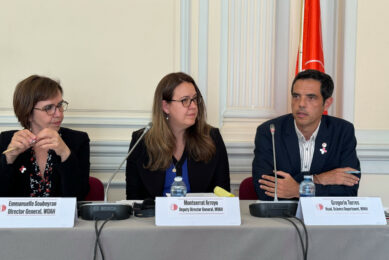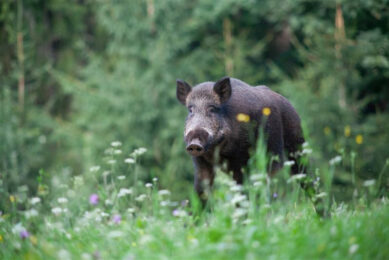Around the world in 10 pig farms

The year 2019 has flown by – and Pig Progress would like to wrap up this exciting year again, just like years before, with an overview of all the pig farms we visited and portrayed.
If one thing became clear in 2019, it is that African Swine Fever in Asia and Europe cast its long shadow every time we intended to plan a farm visit. So in Brazil, pig farm visits were strongly discouraged because the country wished to keep its farms free from any risk at all. In China, visiting a pig farm was completely impossible – perhaps not so much due to biosecurity reasons, but because of the absence of pigs.
The farms that did welcome us, often rightly asked for compliance with strict biosecurity regulations. So on the way to document and report, Pig Progress patiently went through endless numbers of showering-in procedures, changed boots incessantly and even emptied its pockets in front of security guards. So here’s a word of warning: when following Pig Progress on this journey, apart from pigs prepare to see fences, hygiene sluices and disinfection protocols.
Which one is your favourite of 2019?
 DENMARK, Værum Vestergaard Farm: Manure pit extraction
DENMARK, Værum Vestergaard Farm: Manure pit extraction
The Pig Progress journey around the world started in Denmark in 2019, with a visit by Kees van Dooren to Værum Vestergaard Farm, in Randers, Denmark and owned by Jørgen Berth. The 4,000 head finishing farm is worth a visit because it pays attention to one of the major issues of these times: how to deal properly with manure? Underneath the slatted floor, his farm contains cassettes that allow for frequent manure pit extraction. All in all, gaseous substances will not enter the pig house.

 NETHERLANDS, Bankers Farm: Training piglets
NETHERLANDS, Bankers Farm: Training piglets
Hyperprolific sows as well as not using antibiotics are both key challenges for Bankers Farm, located near Deurne, the Netherlands. Hence, this farrow-to-grow facility with a 1,600 sow capacity and 7,500 grower pig places adopted the strategy ‘Opticare’ by Swinco. Essentially, this is an approach to train piglets at a young age to eat solid feed, based on plant protein. That comes with a start at a very early age, providing a 3-step phase feed, with ingredients gradually changing as piglets grow older.

 THAILAND, Wichianburi Farm (CPF): Group housing in Asia
THAILAND, Wichianburi Farm (CPF): Group housing in Asia
Group housing for gestating sows is no longer an issue just for Europe. Also Thailand’s largest swine producer Charoen Pokphand Foods announced it would be converting to group housing for sows. Wichianburi Farm, near Si Thep in Phetchabun province is a great example of the steps the integrator is taking. The brand new 6,000 sow farm with both GP and PS sows produce weaner pigs for contract farmers in the wide area around it. And it has group housing systems installed using stanchions and canals.

 SERBIA, Massagrar Farm: Commercial farming emerges
SERBIA, Massagrar Farm: Commercial farming emerges
A first for Pig Progress as never before have we had the chance to take a look behind the pig scenes in Serbia. The country is surrounded by the EU, yet follows its own path of development. Commercial farms are emerging in the country – one great example is pig farm Massagrar, a 1,250 sow farrow-to-finish farm near Sečanj, at 75km north of the capital Belgrade. The farm could notice the benefits from cooperation with French animal nutrition cooperative Sanders and specialty products by Mixscience.

 USA, Schwartz Farms: Observing offspring performance
USA, Schwartz Farms: Observing offspring performance
Right in the heart of Missouri, near Stover, is Schwartz Farms, owned by Brian and Phyllis Schwartz. The area is not full of pig farms and that is why it was ideal for becoming a part of the breeding research programme of genetics company Choice. Its sows are known for their uniform litters and being friendly, and the company wanted to know how offspring performed under commercial conditions. The farm has 600 sows and 250 beef cows and heifers – and fairly recently also added a Gilt Developer Unit to the facilities.

 FRANCE, Rouxel Farm: Manure is valuable
FRANCE, Rouxel Farm: Manure is valuable
The theme of clever treatment of manure was already addressed in the farm visit from Denmark and it comes back when Kees van Dooren visited Rouxel Farm, a 600 sow farrow-to-finish facility in Plénée-Jugon in Brittany. This farm is involved in a new initiative by the French pig cooperative Cooperl Arc Atlantique, where both manure interception, separation as well as processing that in a central digester plant have all been organised. For a guaranteed period of 12 years, the cooperating pig producers will earn money for their manure.

 RUSSIA, Dankov Lipetsk 8: Cherkizovo’s ambitious plans
RUSSIA, Dankov Lipetsk 8: Cherkizovo’s ambitious plans
Never before, we visited a farm where so many stories came together than when together with swine breeder Topigs Norsvin we visited Dankov Lipetsk 8, a 6,200 sow farrow-to-wean multiplication facility near Dankov, belonging to integrator Cherkizovo. There was the story of ambitious Cherkizovo, eager to play its role in Russia’s ascent to self-sufficiency. Obviously, there was a tour of the farm itself. We learned about Cherkizovo’s lessons learnt when it was confronted with ASF in recent years. Plus: what exactly are the company’s future plans?

 CANADA, Van Raay Farms: The personal touch
CANADA, Van Raay Farms: The personal touch
The word ‘renaissance’ can be applied to Van Raay Farms in Dashwood, ON, Canada. After all the wean-to-finish farm with 15,000 pigs/year was born again, when the owners Teresa and Martin Van Raay realised that perhaps a different approach might be the answer to continue producing. The two launched the initiative ‘The Whole Pig’, through which the couple started to deliver meat directly to customers in their region. This allows them to add, with much pleasure, a personal touch to the pig meat being sold.

 SPAIN, Albesa Ramadera: Optimal transparency
SPAIN, Albesa Ramadera: Optimal transparency
Combining pig welfare with sustainability, efficiency and transparency. That was the ambitious goal of Joan Sanmartín Suñer when his company Optimal Pork Production (OPP) embarked on building Albesa Ramadera Farm in 2009. What was built is a farrow-to-wean facility with 3,310 sow places, just north of Lleida in Northern Spain. It comes with a classroom overlooking the gestation area for group housed sows – and the farm uses novel Henke-Sass, Wolf technology to track its vaccination progress.

 FINLAND, Yrjälä Farm: No more tail docking
FINLAND, Yrjälä Farm: No more tail docking
In Europe, the issue of tail biting and tail docking is one of the most pressing issues when it comes down to pig welfare. A ban on tail docking means that a solution has to be found for tail biting first. That is why Kees van Dooren travelled to Mynämäki, Finland to learn how they do it there – in Finland tail docking has been forbidden since 2003. Susanna and Rami Yrjälä own a wean-to-finish farm near Mynämäki and are convinced that the key to rearing pigs with entire tails is making sure the animals do not get hungry.

Can’t get enough? Check out our farm visit recaps of 2018 (when we visited the Chinese multistorey farms by Yangxiang), 2017 (with e.g. HoCoTec in Colombia), 2016 (including Denmark’s pig ‘embassy’ in China) or 2015 (with e.g. a visit to Cavite Pig City, Philippines).











